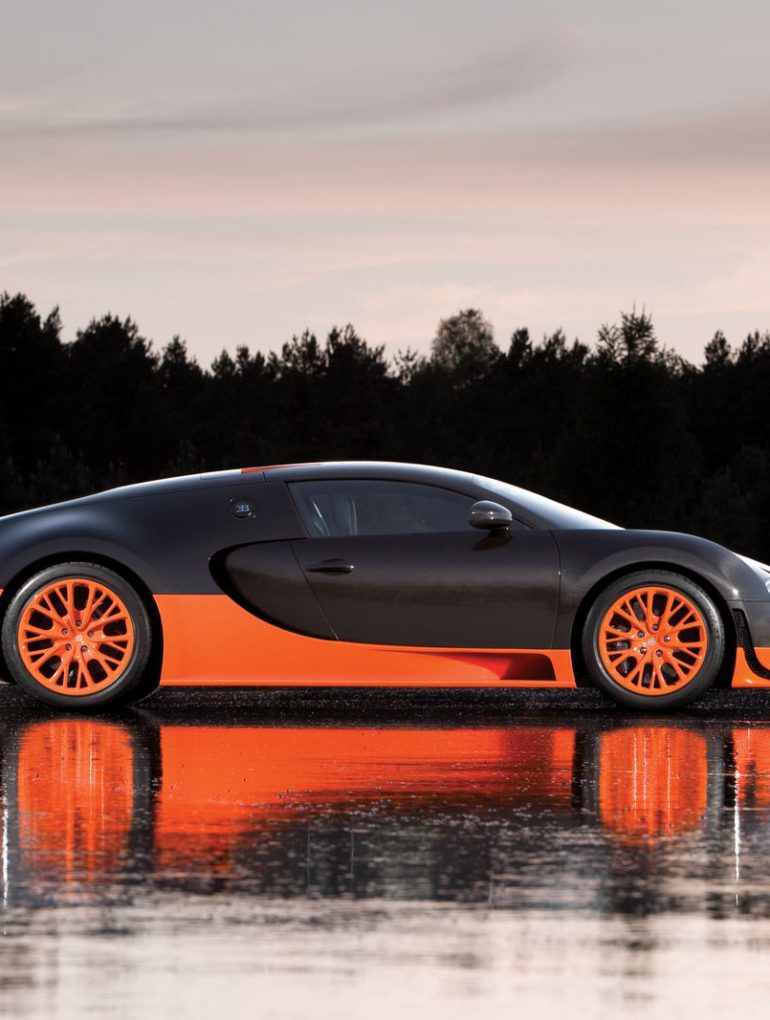The Volkswagen Group took over the Bugatti brand in 1998 following a period of extreme financial challenges for the French automobile company. In 2005, Bugatti announced its resurgence with the launch of the Bugatti Veyron, a formidable hypercar that took the car community by storm.
It was a rocket ship with a monster 16-Cylinder engine that made anything from 1,000-hp to 1,200-hp depending on the variant. Bugatti made 450 units of the Veyron during a production run that spanned a decade, from 2005 to 2015.
That number included several variants, strategically introduced by Bugatti at different times to sustain interest and keep the orders rolling in. Most of them had similar mechanical setups, but the design language varied from one variant to the next. The ones featured here rank among the most striking examples of the lot—unicorns that help preserve the legacy of the Veyron, and the Bugatti brand as a whole, in one way or another.
Special Edition Variant #10: Bugatti Veyron Pur Sang
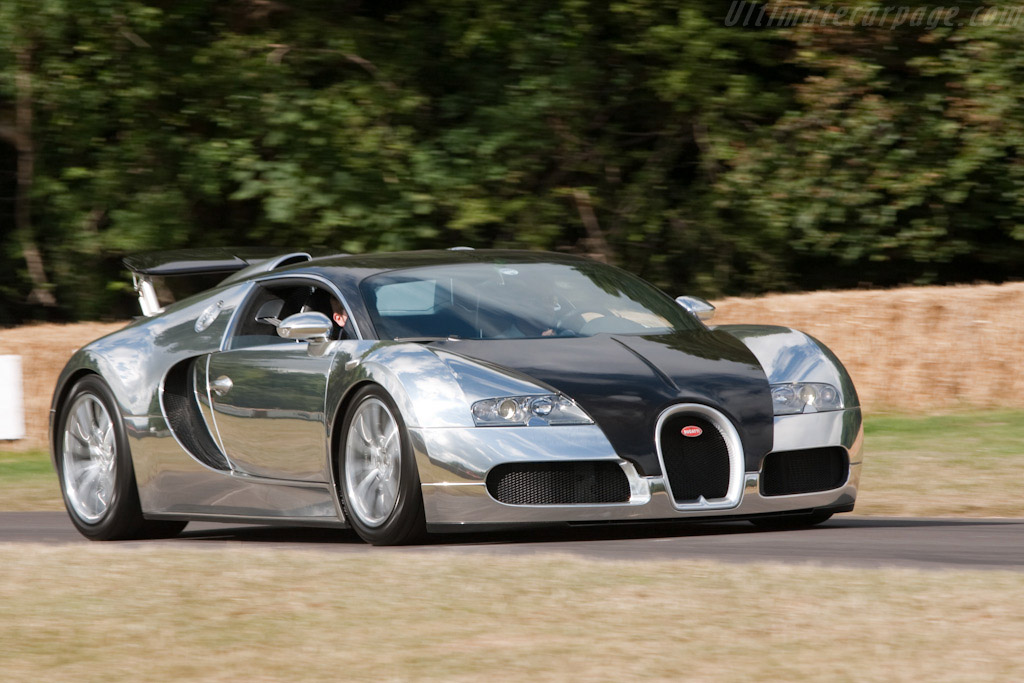
The Veyron Pur Sang was the first in a long line of limited-edition Veyrons. It was unveiled in 2007 at the Frankfurt Auto show as an exclusive series production limited to a run of only five units.
‘Pur Sang’ translates to ‘pure blood’ and expresses Bugatti’s trademark two-tone design showcased in its purest form, sans colour coating. The Veyron Pur Sang models were unpainted, with bodywork made from naked carbon fibre and aluminum polished to a bright sheen. The lightweight materials used in the construction also meant the Pur Sang editions were about 220 pounds lighter than the standard Veyron.
Special Edition Variant #9: Bugatti Veyron Fbg par Hermès
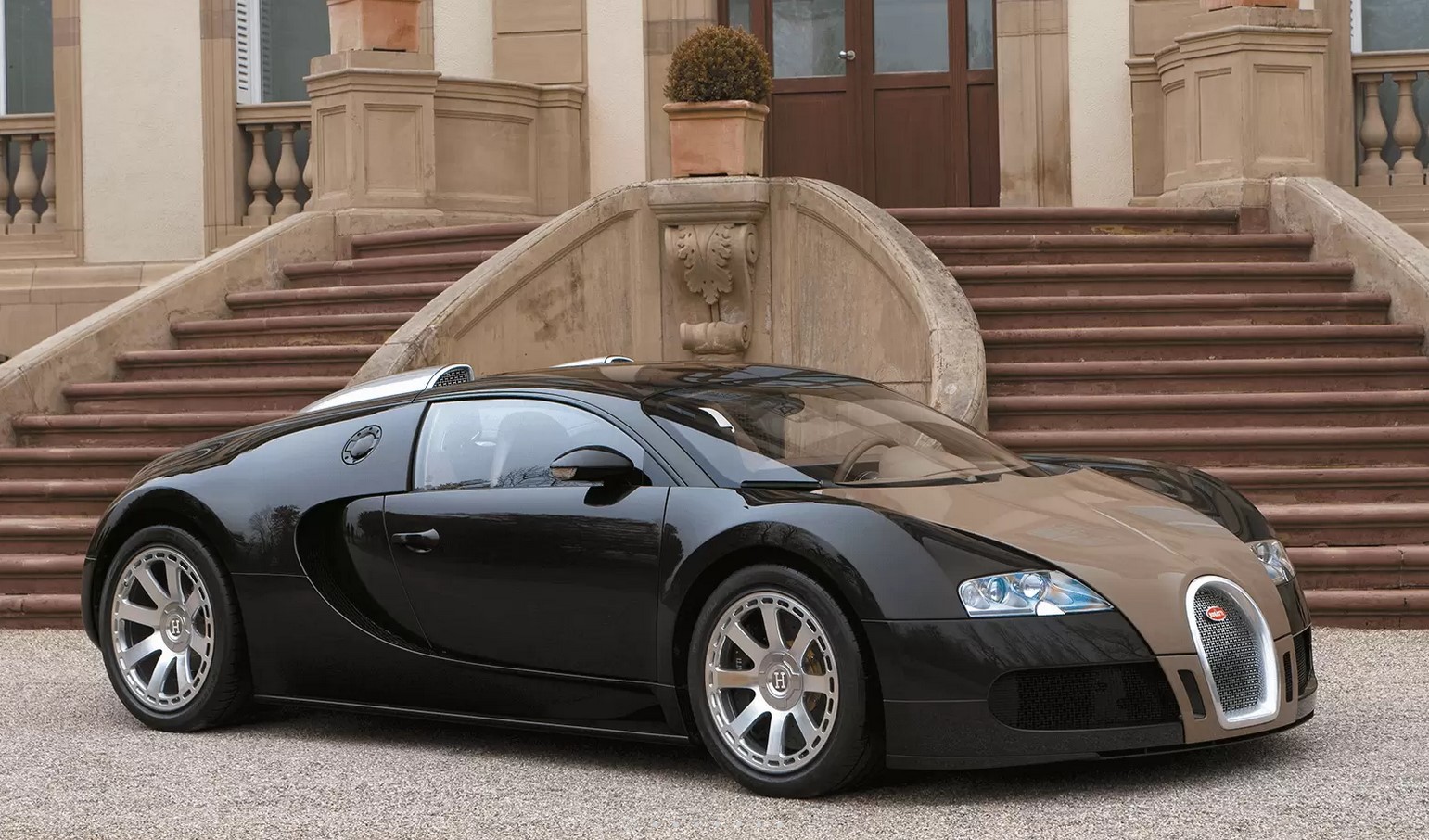
This exclusive series Veyron resulted from a collaboration between the carmaker and famous fashion house, Hermès. In fact, the ‘Fbg’ designation refers to Farboug, the location of the Hermès main store in Paris.
The aim was to infuse elements of Hermes signature styling with the car’s design to create something exceptional. The Veyron Fbg par Hermes gained new eight-spoke wheels and special two-tone colouring. More significantly, the mesh over the front grille and air intakes was redesigned and now sported several Hermès logos in an interlocking pattern.
The fashion house is well known for its leatherwork, and the Veyron interior is laid out with exquisite leather trimmings. Even the trunk is leather lined and houses a pair of custom-designed Hermès luggage.
Special Edition Variant #8: Bugatti Veyron Sang Noir
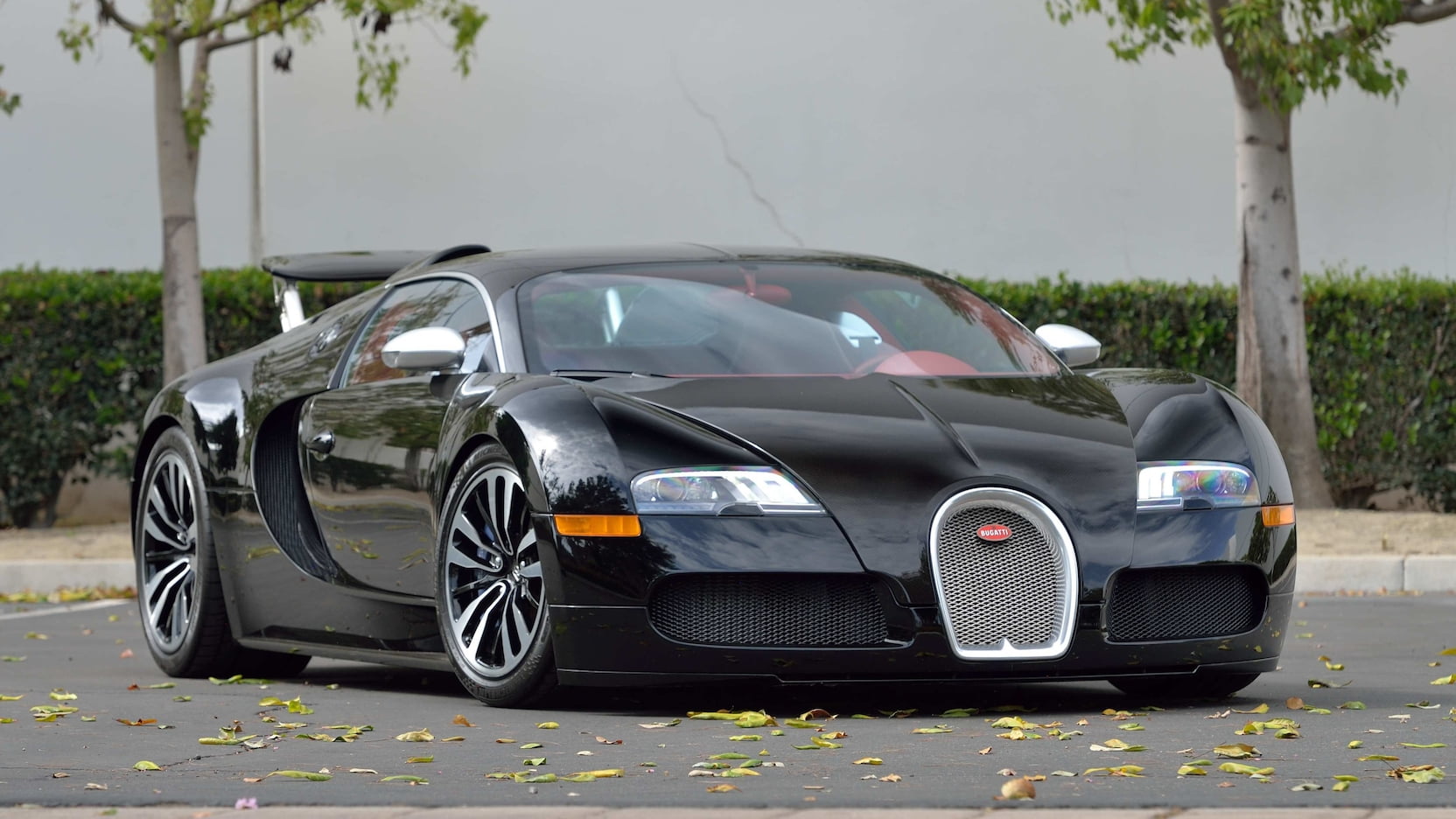
The famous painter Vincent Van Gogh once said, ‘it often seems to me that the night is much more alive and richly coloured than the day.’ This intriguing statement inspired the Sang Noir, French for ‘black blood.’
The car pays homage to the legendary Type 57S Atlantic of the mid-1930s and features a two-tone black paint complemented by exposed carbon fibre. Brightly polished wheels, chrome horseshoe grille, silver side mirrors and a tangerine interior provide a distinctive contrast.
A total of 12 Veyron Sang Noir models were produced, and in March 2019, the only one with a red interior was sold at an RM Sotheby’s auction for a cool $1.5 million.
Special Edition Variant #7: Bugatti Veyron Bleu Centenaire
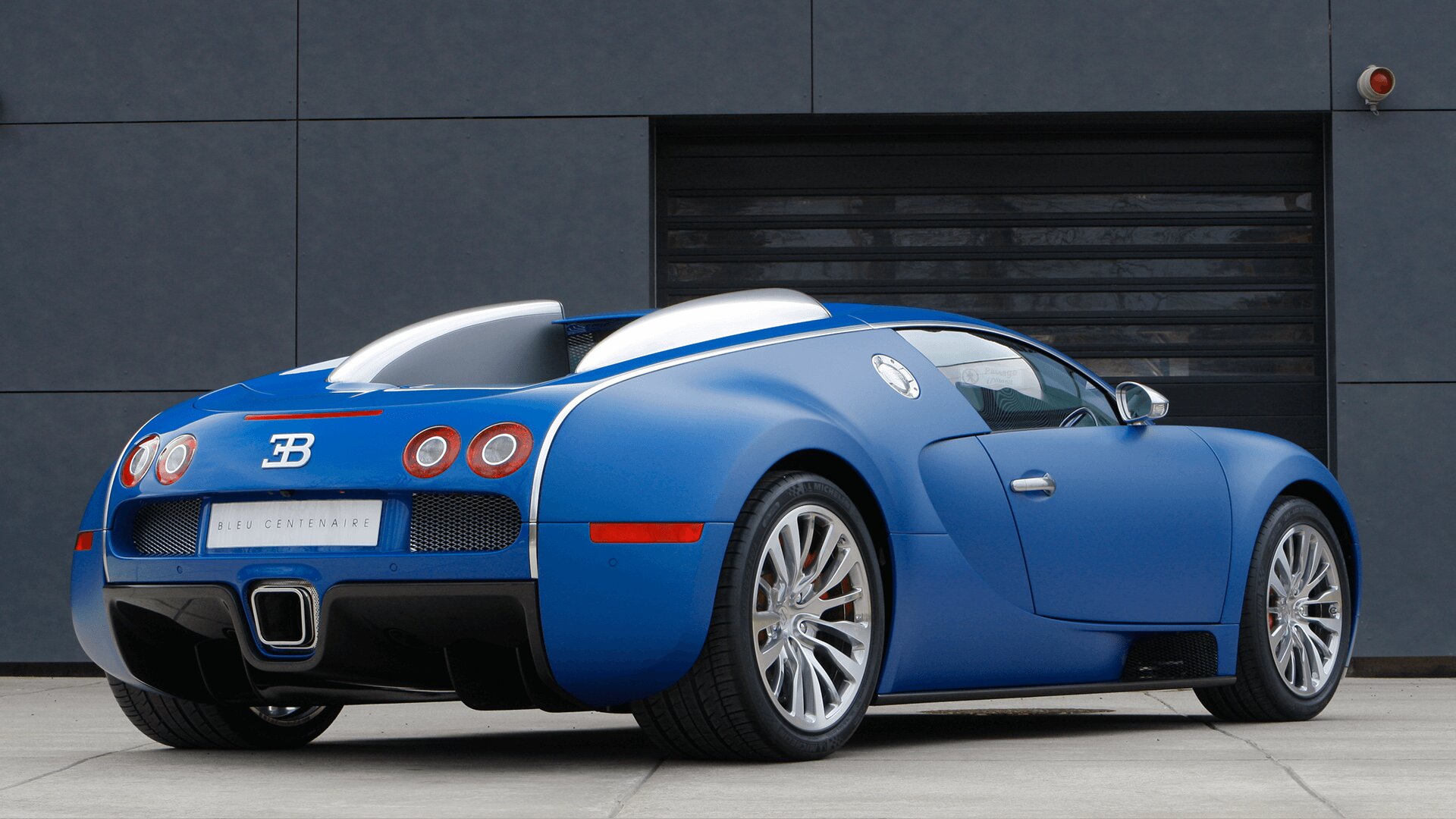
Unveiled at the 2009 Geneva Auto Show, the Veyron Bleu Centenaire was a special commission to commemorate the brand’s 100th anniversary. The model adopted the traditional Bugatti two-tone specification for the exterior, but instead of two different colours, the carmaker decided on a combination of ‘Sprint Blue’ gloss and matt combo.
The wheel featured a special design, enhanced by bright red brake callipers. Snow-beige leather is the material of choice for the interior, and it covers the seats and dashboard.
Bugatti created a special emblem for the Blue Centenaire. It featured the outline of the Veyron and another Bugatti legend—the Type 41 Royale. The drawing also included the inscription ‘0–100’, representing the period from when the company was founded.
Special Edition Variant #6: Bugatti Veyron Grand Sport Vitesse “Jean-Pierre Wimille”
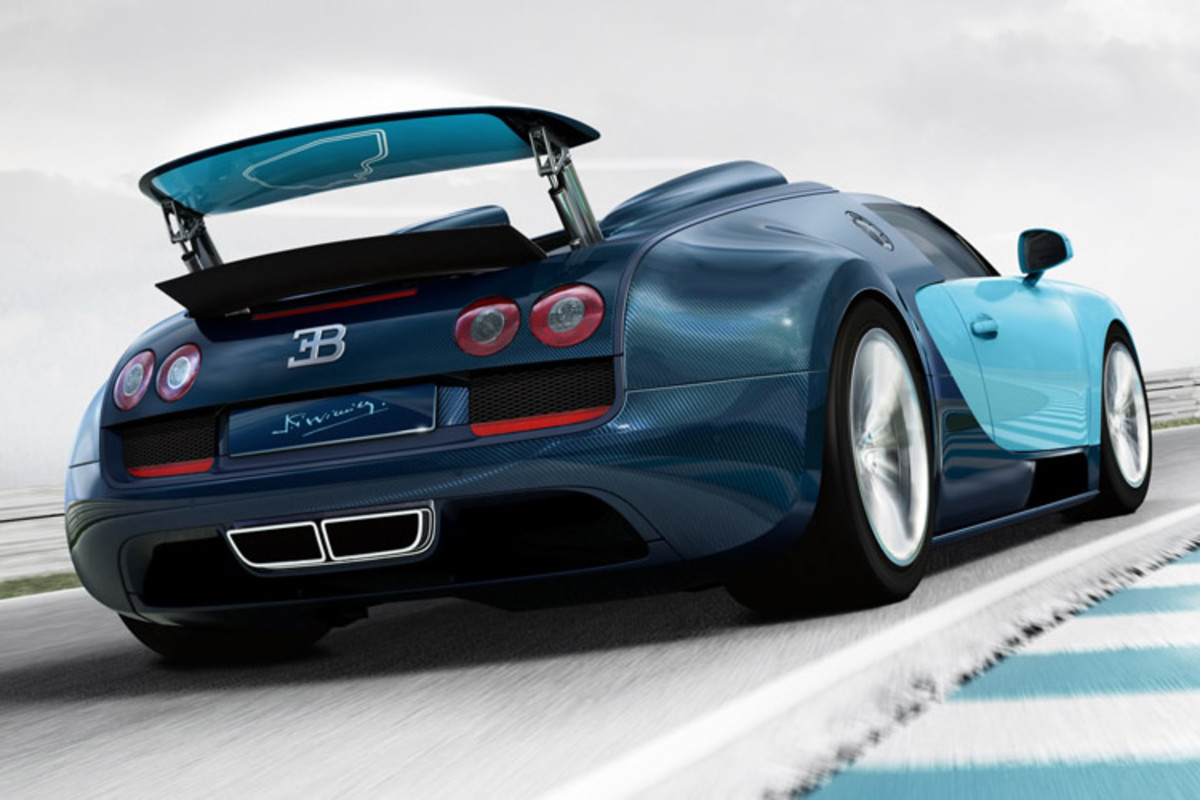
Jean-Pierre Wimille was a Bugatti factory test driver. In 1937, he achieved the carmaker’s first win at the 24 Hours of Le Mans and proved it was not a fluke when he repeated the feat only two years later.
The ‘Jean-Pierre Wimille’ Bugatti Veyron paid homage to the driver and his remarkable achievements. It was based on the Veyron Grand Sport Vitesse and sported elements taken from Jean-Pierre’s 1937 race-winning car, a Bugatti Type 57G Tank.
The carbon body of the Veyron is finished in light blue, the same colour as the French racing cars at the time, and a darker blue shade highlighting the car’s profile. The outline of the Le Mans racecourse is painted on the underside of the massive spoiler. It is also present as part of the interior finishing in the form of a milled aluminum relief on the lid of the rear storage compartment.
The Bugatti Veyron ‘Jean-Pierre Wimille’ was the first of six Bugatti Legends editions. Each edition, limited to three units each, honoured an important person in Bugatti’s history.
Special Edition Variant #5: Bugatti Veyron Grand Sport L’Or Blanc
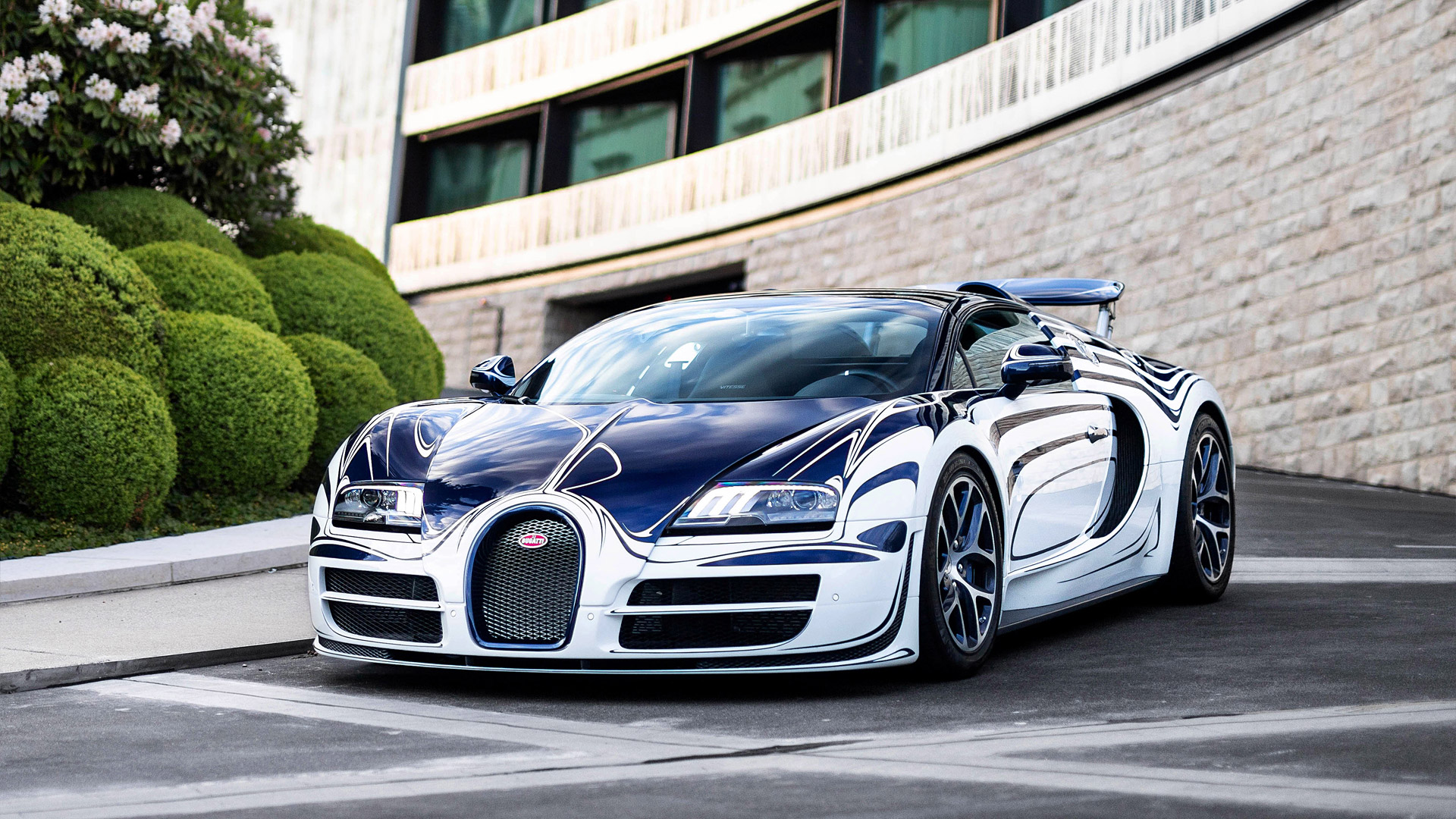
The Veyron Grand Sport L’Or Blanc was conceived by a rather head-scratching partnership between Bugatti and the Royal Porcelain Factory of Berlin. The factory-supplied porcelain bits, which, believe it or not, were used to make parts like wheel badges, fuel filler cap and the Bugatti badge on the rear.
The application was a little bit more generous on the interior of the Veyron, with porcelain panels and a miniature relief of Rembrandt’s dancing elephant etched on the lid of the rear storage compartment. The porcelain bits were specially treated to minimize the risk of injury should they be broken up in a crash.
The paintwork on the car is just as impressive: a fluid pattern that mimics the flowing lines of the Italian Stelvio Pass, the highest paved mountain pass in the Italian Alps.
Special Edition Variant #4: Bugatti Veyron Grand Sport ‘Bernar Venet’
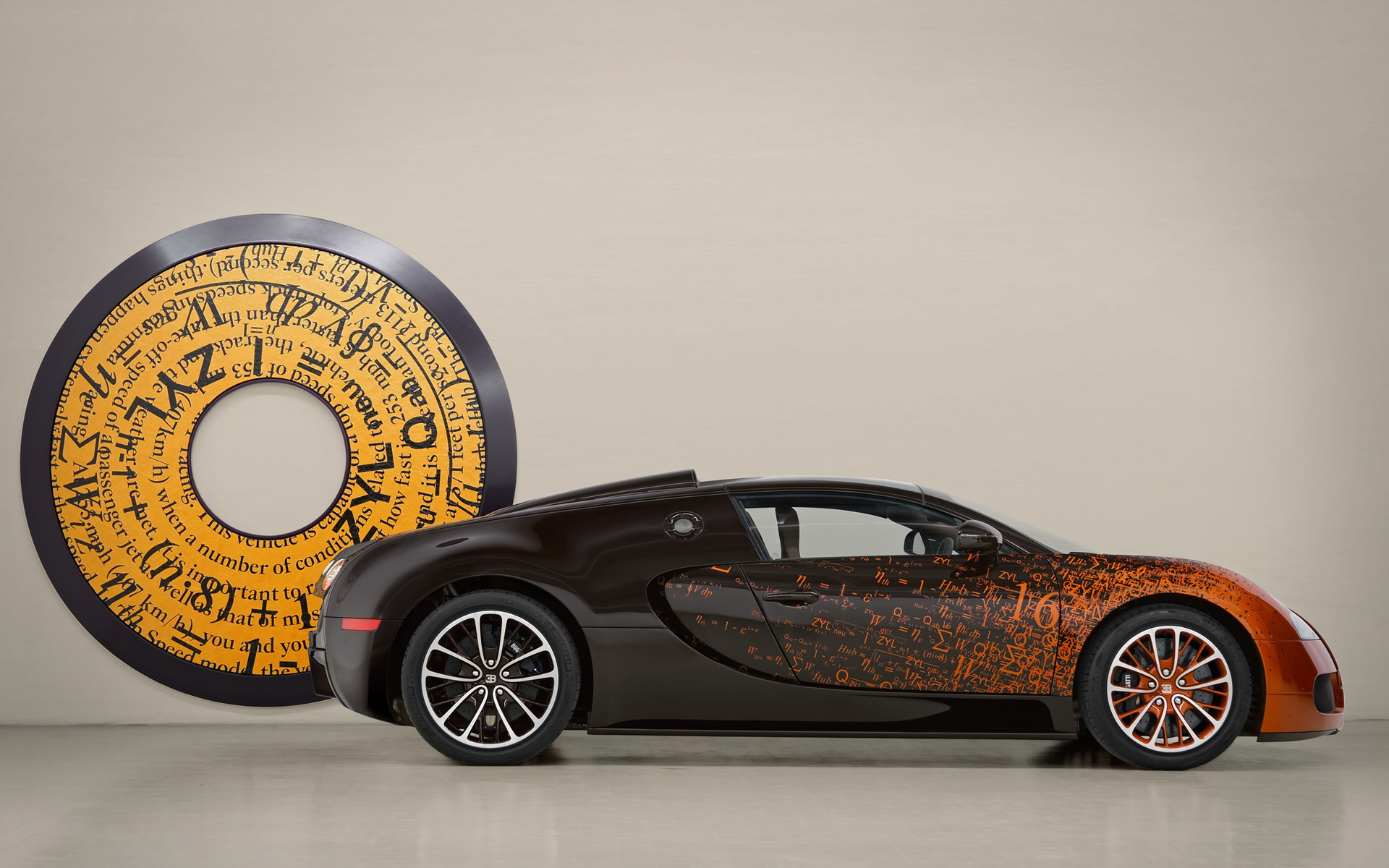
Conceptual artist Bernar Venet has a passion for mathematical formulas and scientific theories. This was evident in the design he drummed up for this special edition Veyron Grand Sport.
However, those mathematical equations and symbols are not random scribblings; they are actual technical formulas used by engineers to calculate the power of the Bugatti engine. Now, that’s cool.
The theme continues on the interior, where the calculations are also visible on the door panels. Every aspect of the car’s design was deliberate. Even the rusty colour of the formulas refers to a series of successful sculptural works by Venet.
Special Edition Variant #3: Bugatti Veyron Grand Sport Vitesse ‘Meo Costantini’
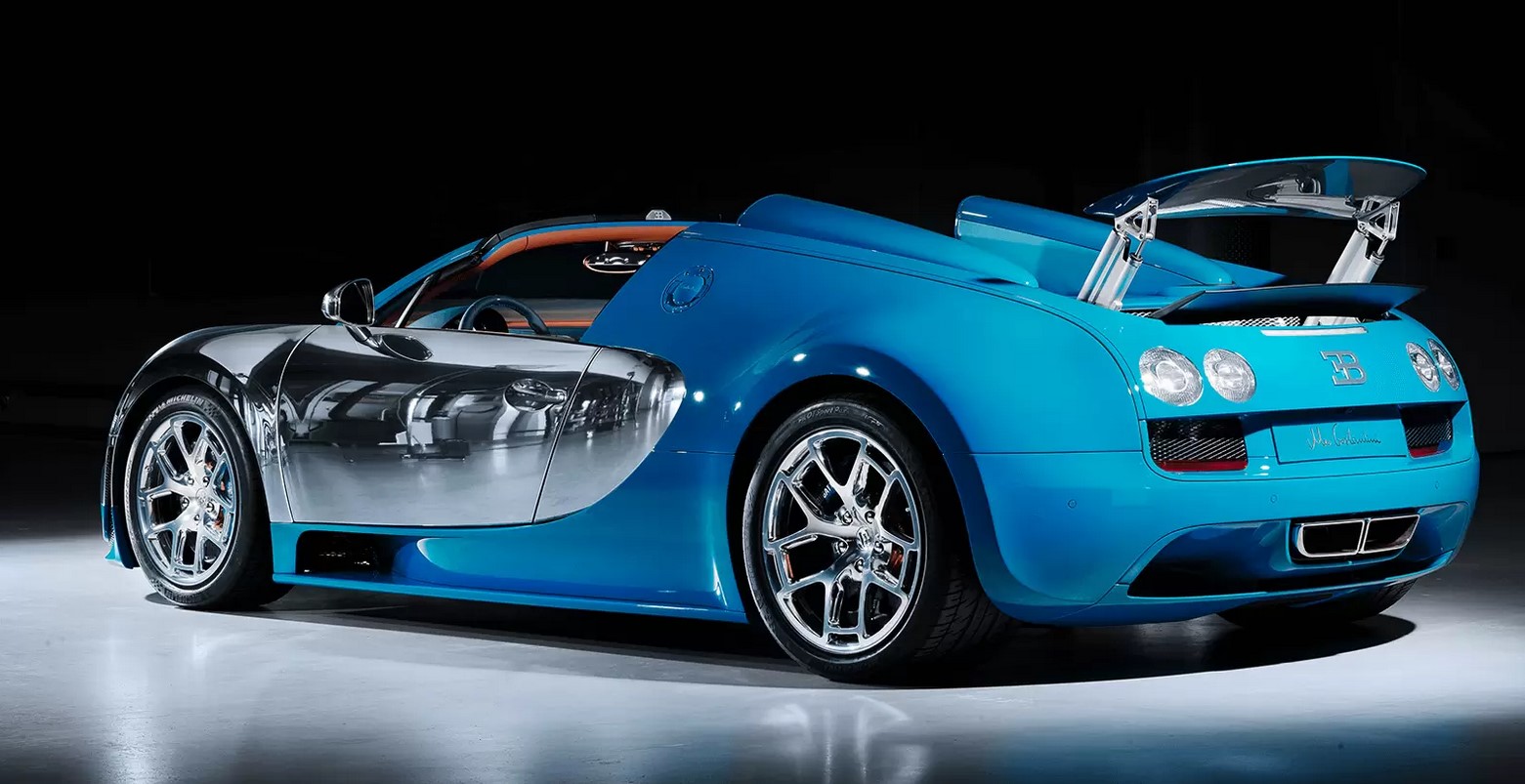
The third model in the Bugatti Legends edition was unveiled at the 2013 Dubai Auto Show. The specially appointed Bugatti Veyron Grand Sport Vitesse was dubbed the Meo Constantini Edition in honour of the racer who achieved several victories in the 1920s driving a Bugatti Type 35.
The blue colour on the exterior was developed specifically for the car and blended well with the hand-polished aluminum used for the doors, fenders and front bumper. Like the Jean-Pierre Wimille edition, Costantini’s signature is laser-etched into the aluminum fuel and oil caps. Also, the outline of the Targa Florio course, site of a couple of Constantini’s race victories, is painted on the underside of the rear wing, visible primarily while the car is braking.
A highlight of the interior is the door panels. There, the leather inserts have been laser-etched with a scene depicting Costantini in action, leading the way on a racing circuit in his Type 35, ahead of his challengers.
Special Edition Variant #2: Bugatti Veyron Grand Sport Vitesse ‘Ettore Bugatti’ Edition
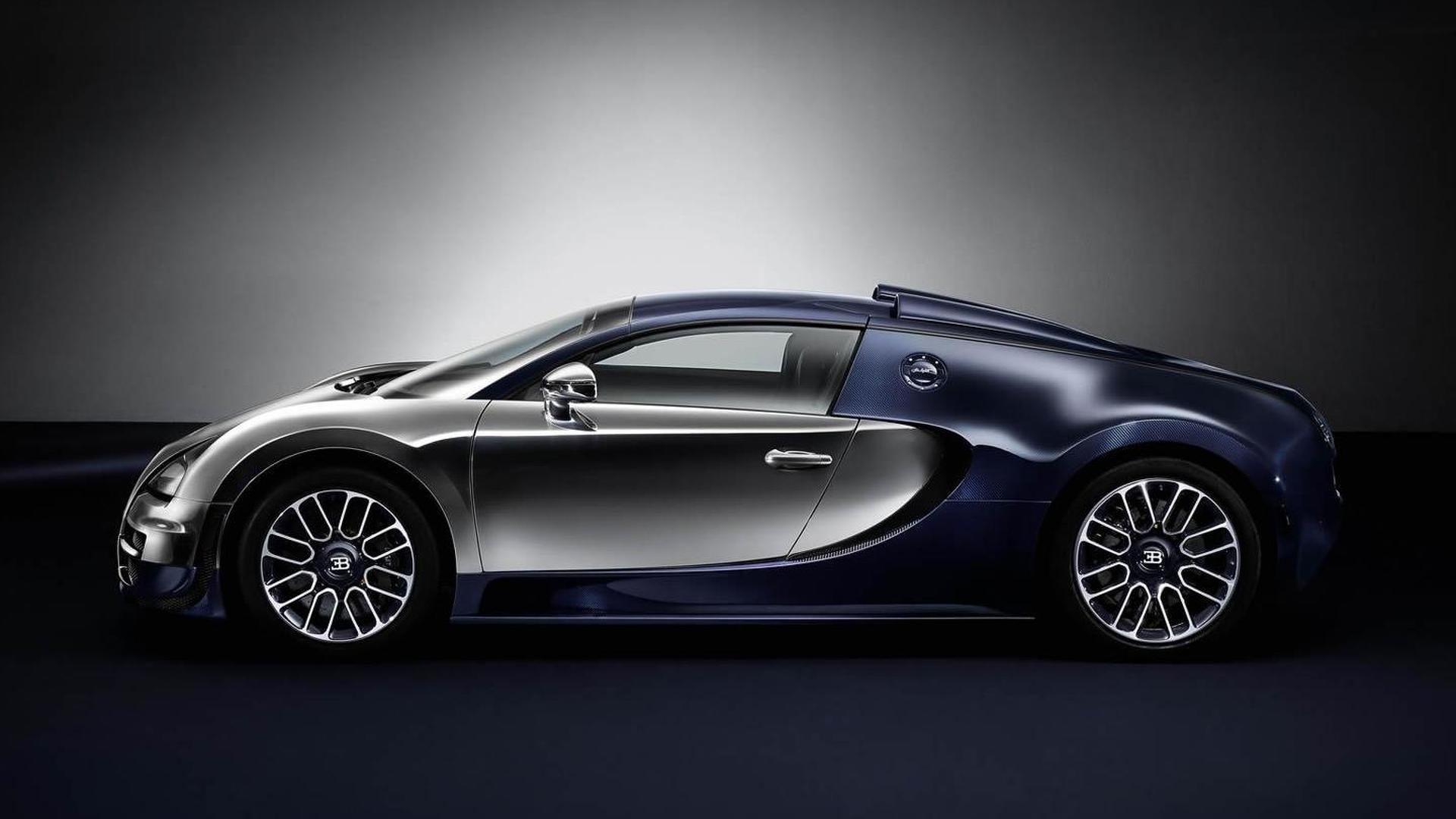
It is only fitting that one of the most influential figures in 20th-century motoring and the patron behind the Bugatti brand gets a special edition car in his honour. The Veyron Ettore Bugatti edition, modelled after the iconic Type 41 Royale, was the last of the Legends series.
The car’s exterior bodywork is a mix of hand-polished aluminum, coated with a clear lacquer and dark blue carbon fibre. The alloy wheels are custom-made and hark back to the eight-spoke wheels featured on some of Bugatti’s most memorable 1920s race cars.
This Legends Bugatti featured an elephant sculpture made of platinum as part of the interior decor. The artwork, also found in some of the other special edition Bugattis, was originally created by Rembrandt, Ettore’s brother and famous sculptor. The Ettore Bugatti edition was unveiled in 2014 and carried a $3.1 million sticker price.
Special Edition Variant #1: Bugatti Veyron Super Sport World Record Edition
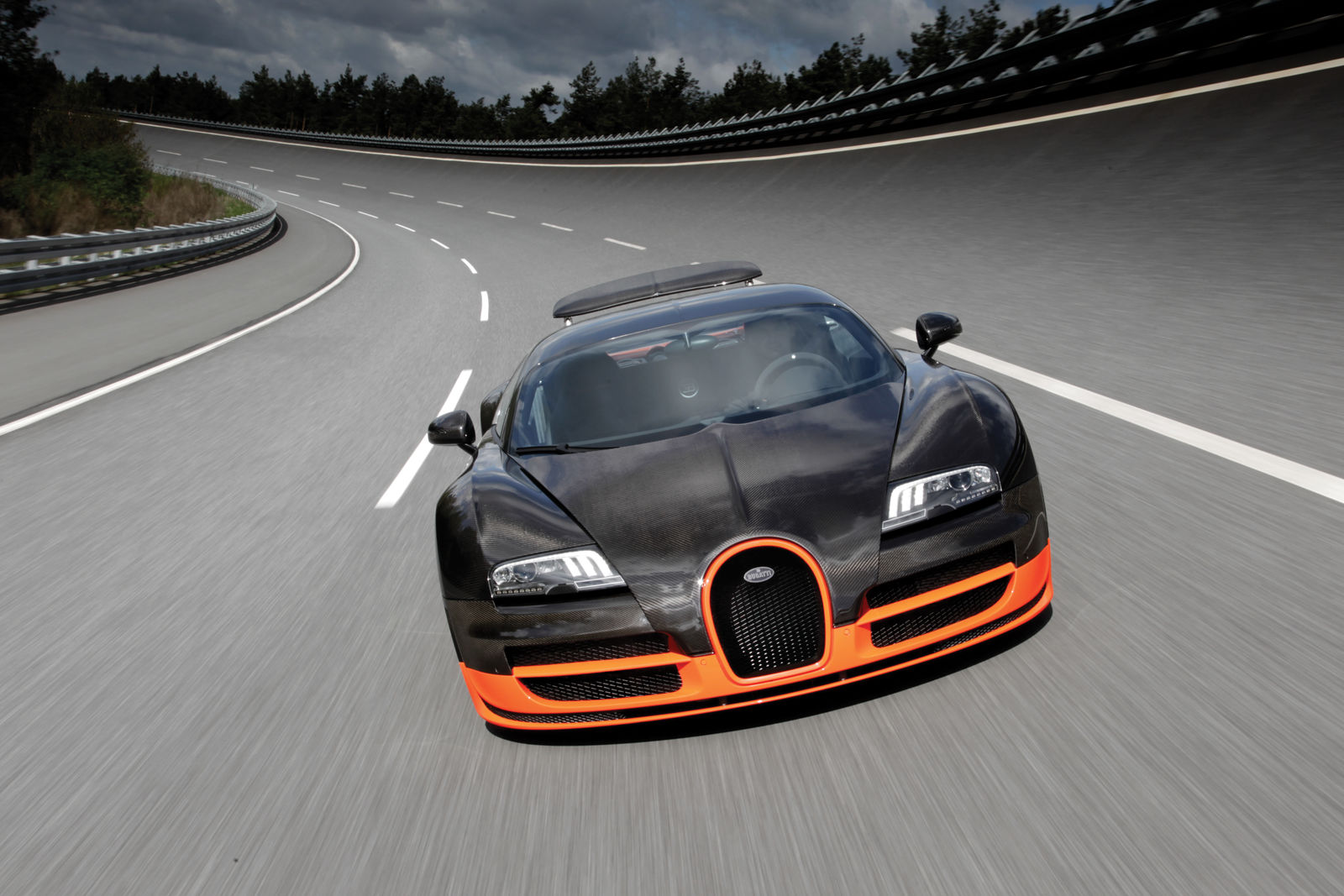
In 2010, a Bugatti Veyron Super Sport set a world record for a production car when it reached a top speed of 267.81 mph during a VMax run at Volkswagen’s Ehra-Lessien test track. To commemorate that stunning achievement, Bugatti decided to produce five Veyron Super Sport units with an identical design to the car used for the record run.
The World Record edition cars sport a distinctive black and orange combo for the bodywork, complemented by bright orange wheels for dramatic effect. Bugatti has continued this tradition with the Chiron Super Sport 300+, a limited series production celebrating the Chiron as the first production car to crack the 300 mph speed barrier.


